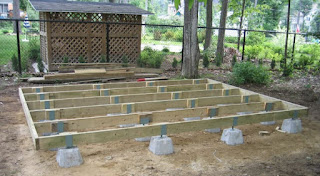Shed Foundation Options: Choosing the Right Base for Your Outdoor Oasis
Before embarking on your shed-building adventure, one crucial decision is selecting the appropriate foundation. A strong and stable foundation ensures the longevity and durability of your shed while protecting its contents from moisture and the elements. In this article, we will explore various shed foundation options to help you make an informed choice that best suits your shed's size, location, and intended use. Whether you prefer a cost-effective solution or are looking for a more permanent base, we have got you covered.
1. Gravel or Crushed Stone
Gravel or crushed stone foundations are a popular choice due to their affordability and simplicity. This option involves leveling the ground and adding a layer of compacted gravel or crushed stone. It provides excellent drainage, keeping your shed dry and preventing water damage to the structure. Gravel foundations work well for smaller sheds and are relatively easy to install.
2. Concrete Slab
For a more permanent and robust foundation, a concrete slab is an ideal choice. A concrete slab provides a solid and level surface for your shed, offering superior support and protection. While the initial cost and labor may be higher compared to other options, a concrete slab ensures your shed remains stable and secure for years to come.
3. Concrete Piers
Concrete piers, also known as deck blocks or precast concrete piers, are a versatile foundation option suitable for various shed sizes and terrains. These individual blocks support the shed's floor joists, keeping them elevated above the ground to prevent moisture damage. Concrete piers are relatively easy to install and are an excellent choice for sheds situated on uneven ground.
4. Pressure-Treated Wood Beams
If you are looking for a natural and affordable foundation option, pressure-treated wood beams are worth considering. These wooden beams are placed directly on level ground, providing a sturdy base for your shed. However, it's essential to use pressure-treated wood to resist rot and termite infestation.
5. Sonotube Footings
For larger sheds or those in areas with frost heave concerns, sonotube footings offer a reliable solution. Sonotubes are cardboard tubes filled with concrete, creating deep footings that extend below the frost line. This prevents the foundation from shifting during freeze-thaw cycles, ensuring the shed remains stable year-round.
6. Eco-Friendly Options
If you prefer eco-friendly alternatives, consider options like recycled plastic deck blocks or eco-friendly concrete mixes. These choices reduce environmental impact while providing a solid and reliable foundation for your shed.
Conclusion
Selecting the right foundation for your shed is a crucial step in ensuring its stability, longevity, and overall performance. Each foundation option offers its unique advantages, catering to various shed sizes, budgets, and environmental considerations. Whether you choose a cost-effective gravel foundation or invest in a permanent concrete slab, prioritizing a strong base will protect your shed and its contents for years to come. Before you start construction, carefully assess your shed's requirements and local conditions to make the best foundation choice for your outdoor oasis. Remember, a solid foundation sets the stage for a sturdy and dependable shed that will serve you well for many seasons ahead.




Comments
Post a Comment